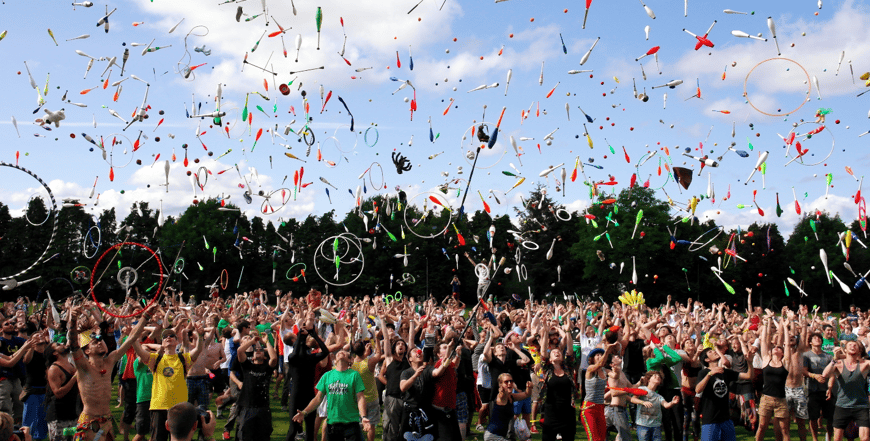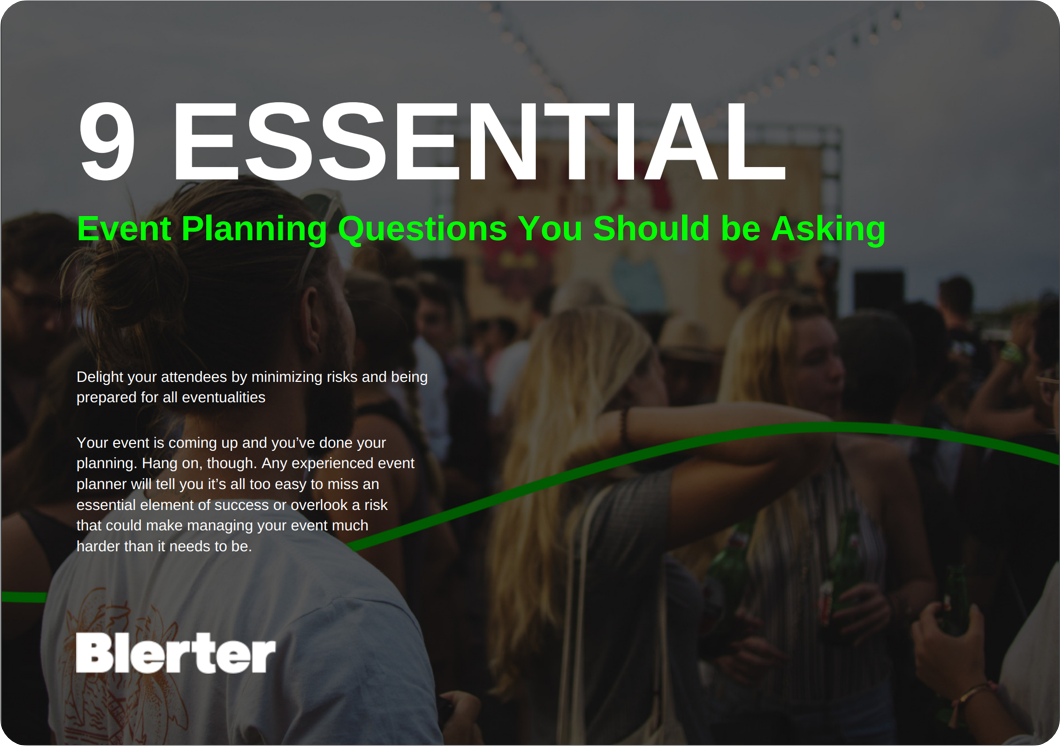The right event sponsorship is the answer to many event planning questions. Getting those answers, in the form of the sponsorship you need, does take a lot of work though.
So, we thought it would be useful to take a look at what you need to do to attract and retain the support of event sponsors that will, ultimately, enable you to bring your event to life.

First off, you have to turn your exciting vision for your event into something that’s equally attractive to sponsors, potential event crew and – kinda important not to forget them – your target audience. And, you need to make sure your event’s brand image and all the imagery you put out there are fit for purpose and present the vibe you’re looking to be associated with.
Then, you need to put together compelling sponsorship packages and deliver on the promises and value you promote in them to retain those sponsors you win over.

Any experienced event planner will tell you how important sponsorship can be to an event’s success. Funds are always short. You’re always looking for cost-effective ways to promote the event. So, any way you can add the right kudos or flavor to your event is super valuable. And, any trust you can build with your target audience is also valuable.
The beauty of sponsorship is in the virtuous circle it can create. When it works well, it’s a wonderful thing….

When sponsors and events match up well a mutually beneficial relationship can be long and sweet. To name just three of many enduring sponsorship relationships:
To follow the example of these well-known brands and events you need to get five key elements of event sponsorship development right.
Let’s start by looking at developing an attractive and appealing vision for your event, which you can then sell to sponsors..
Whatever your event is, you’re not going to get far if you don’t have a very clear picture of who your target audience is and what will appeal to them. This should inform every element of your event, from venue and attractions you book to marketing materials, fonts and colours you use on your website.
Let’s take the arts and music festival Coachella and compare it with the BBC Proms series of classical music concerts, for a broad audience at London’s Albert Hall, and then one for dedicated followers of classical music, the Richard Wagner Festival in Bayreuth Germany.
We’re talking a spectrum from the coolest contemporary music through popular classical music, for a more general audience, to more challenging classical music for black tie wearing aficionados.
There might be some crossover between audiences, but you can bet the Wagner Festival organizers aren’t trying to appeal to the designer t-shirt wearing Coachella-goer or the joke t-shirt wearing Proms-enthusiast.
Every aspect of the image you build for your event – logo and tagline, language and imagery, look and feel, style and vibe, attractions and suppliers, merchandise and marketing tactics – needs to be designed to be appealing to your target audience. This will create a flavor or culture that you can build your event’s community (team, volunteers, suppliers, attendees, entrants, entertainment, etc.) around.
And, getting sponsors to join that community will be so much easier if they can see that you understand your audience, which will often be their own target market too.
Often? Well. Sometimes sponsors will be less worried about your audience aligning exactly with their target audience. Eventbrite asked 10 event sponsors why they got involved in events they were sponsoring and their answers revealed some other motivations that come into play:

So you’ve got your event’s culture sorted out to appeal to your target audience and relevant sponsors. Now it’s time to look at how to fit sponsors into your messaging. The possibilities are, almost, endless.
More traditional opportunities to offer sponsors exposure, such as:
Exposure through digital marketing, such as:
Note: this works both ways, of course, sponsorship might come in the form of access to space on sponsors websites and exposure in their digital marketing efforts.
We’ve just dipped our toes into the pool of possibilities here. Looking for more ideas:

Once your event has a history of success it will be easier to generate sponsorship. You’ll have a profile to sell and you should have a good set of data to quantify that profile, press coverage to reference and that sort of thing. If your event has been popular with your target audience, potential sponsors targeting that same audience may already know about your event.
What about when you’re still promoting your vision for your event? At that stage your professionalism and the quality of the brand idea you’re building will be key, as will the quality of the sponsorship package you offer (which we look at next).
At this stage the strength of your pitch to your potential sponsors is in the way you can demonstrate understanding of your audience and event branding that will appeal to them. It’s in the idea itself, your market research, your event planning record and personal brand. And it’s in your ability to communicate a clear picture of how the event will be run and what you have done to cover off all the details.
Assuming you can sell your vision for your event – a well-run event that will appeal to your target audience – the next challenge is to sell the ways sponsors can get involved.
There are all sorts of benefits that an event can offer a brand, but you need to describe those benefits in a compelling way, if you’re going to get sponsors on board.
It’s not just about listing opportunities for brand promotion that you can offer, it’s also about selling your event’s brand as something of value that aligns with sponsors’ brands.
And, we strongly recommend that you create custom pitches for all major sponsors. That way you can demonstrate you understand and respect their brand before showing how well your brand aligns with theirs.
Important to remember: large businesses and well-known brands get a lot of requests for sponsorship; the effort you put into selling your event brand, customizing your package to them and standing out from the crowd will pay off.

Getsponsorships.com offers great hints on the building blocks for a good sponsorship package:
Hint: If your event has already been held one or more times be sure to detail how successful it’s been to help them quantify the opportunity you’re offering.
Hint: don’t forget to mention any help you can offer them when it comes to proving the ROI of their involvement in your event via data collected, etc.
Hint: an incentive to respond quickly is a good element to add to your packages for minor sponsors.
Need more guidance on putting a sponsorship package together? Check out these examples from Gevme.com or this great process for building a package from Practicalsponsorshipideas.com.
At this stage, you’ve built a compelling vision of your event supported by appropriate branding, put together attractive sponsorship packages and successfully involved sponsors.
Your work with your sponsors is only just beginning. Now the challenge is to turn what you have achieved into enduring sponsorship relationships by delivering on the promises you’ve made.
To do that, you need to consider and accommodate your sponsors before, during and after your event. They are every bit as important as the star act, key suppliers and your audience.
Again, we’re only scratching the surface of the things you need to consider if you’re going to manage your sponsorship relationships in a way that gives you the best chance you’ll retain them. For more information we recommend you read:
The relationship between your event’s brand and sponsors’ brands is one of the key factors in the success of your event. In many cases, it’s what makes an event possible or allows an event to reach a sustainable level of success by underwriting your first few events.
Hopefully you now have a better understanding of what you need to do to establish and maintain those relationships by creating an appealing brand, selling it to sponsors and continuing to sell it throughout the process of running your events.
Talk to the Blerter team about how our app can help you ensure your events run smoothly, that ROI data is captured, and sponsors are kept in the communications loop before, during and after the event.

Streamline your delivery, be prepared for things that can go wrong and increase crew engagement at your next event.